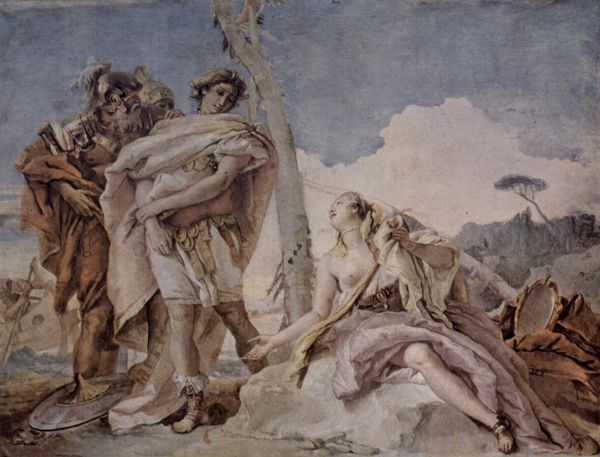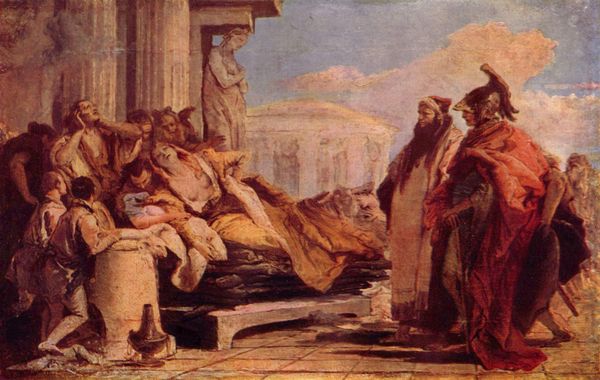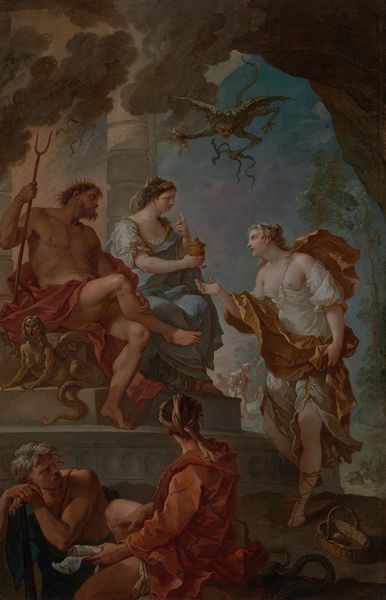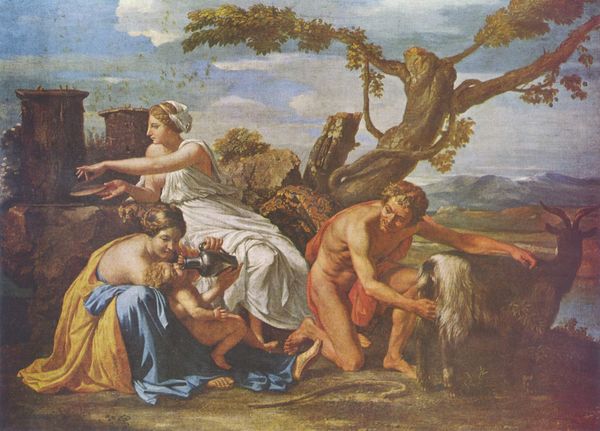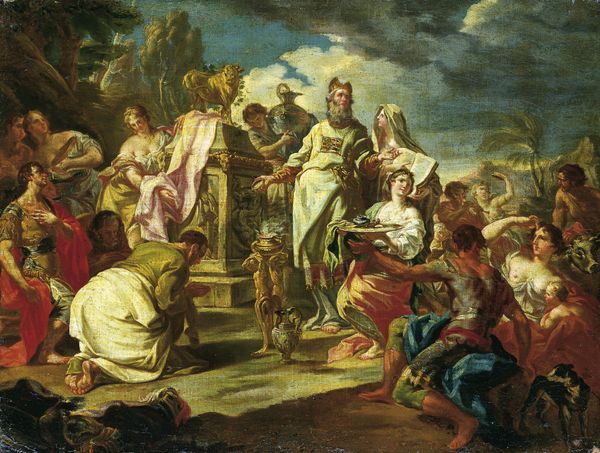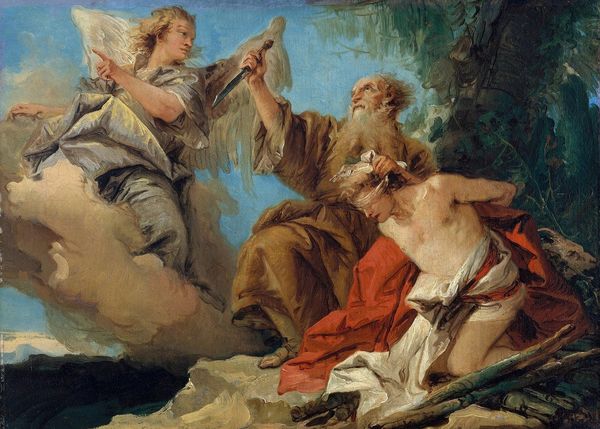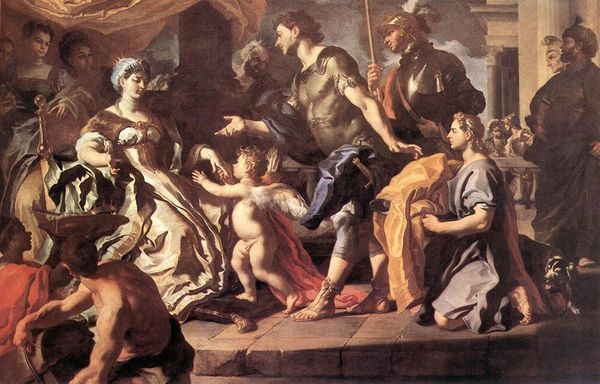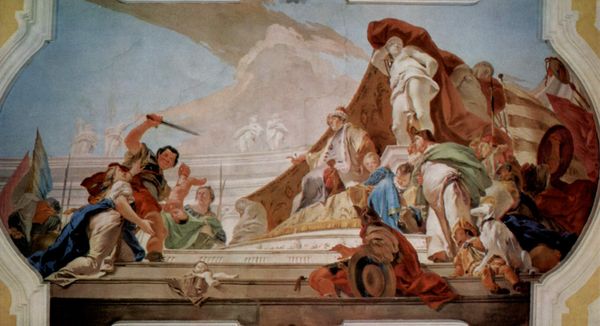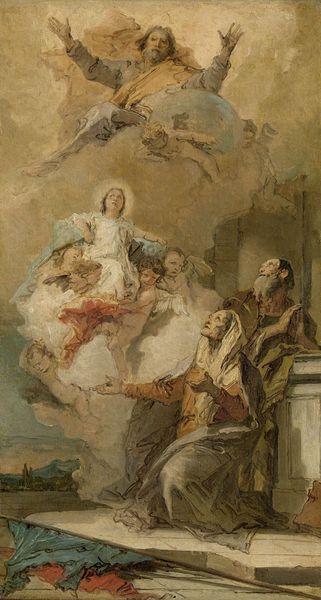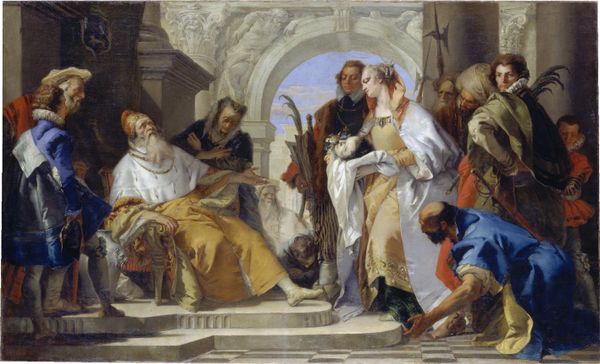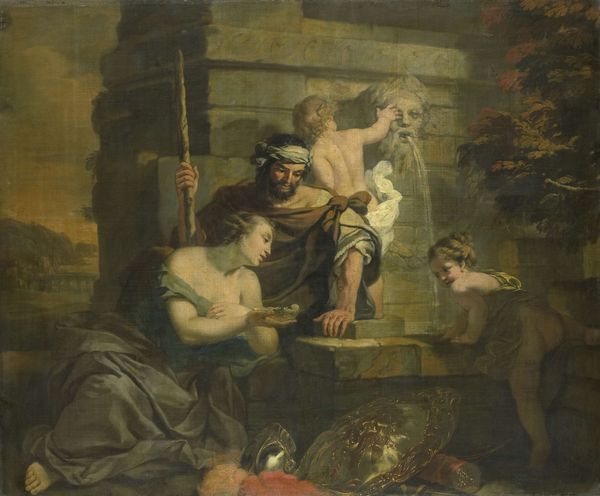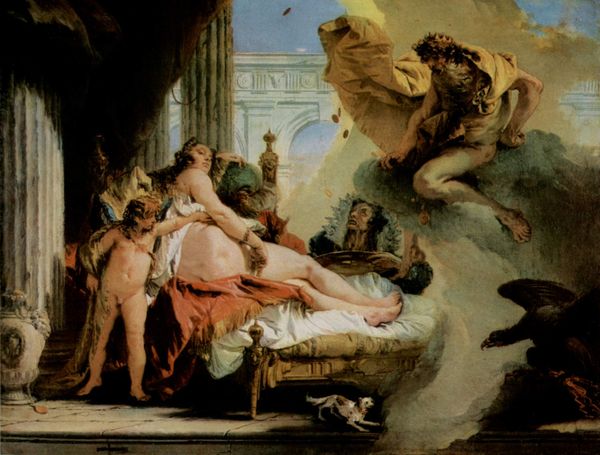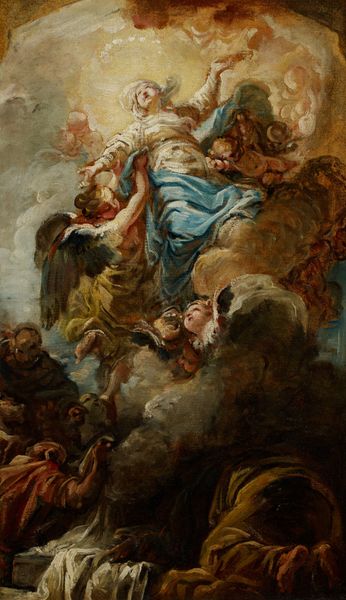
painting, oil-paint
#
portrait
#
allegory
#
baroque
#
painting
#
oil-paint
#
oil painting
#
roman-mythology
#
mythology
#
history-painting
Dimensions: 53 x 41 cm
Copyright: Public domain
Curator: What strikes me immediately is the painting's mood: a kind of delicate horror, like a dream fraying at the edges. Editor: That’s an apt description! What we're viewing here is "Sacrifice of Iphigenia," rendered in oil paint by Giovanni Battista Tiepolo. It depicts a dramatic moment drawn from Greek mythology, a scene heavy with consequence. Curator: Iphigenia, daughter of Agamemnon, about to be sacrificed. The symbol of the blindfolded figure is prominent – is this masking inner turmoil or something more culturally pervasive? Editor: Precisely! The blindfold is strategically placed; the action occurs at the demands of the gods. What interests me is Tiepolo’s Baroque style, how it manipulates light and emotion to explore this pivotal story from a politically complicated angle. It's interesting because its public function would involve commentary on social themes. Curator: The light guides us right to Iphigenia herself; she looks more resigned than terrified. This moment of submission... does that amplify a sense of inevitability? The cultural acceptance of destiny handed down? Editor: It very much speaks to the notion of civic duty trumping personal will, or perhaps exploring the complex relationship between a leader's decisions and the fate of their community, reflected, here, via mythology. There is no record to demonstrate definitively Tiepolo's views on governance but we see how imagery such as this would act as a talking point in Baroque Society. Curator: And beyond the human drama, there is the stag – an animal carrying clear associations of sacrifice, a wild essence submitted to the altar. A symbol that echoes far back into archaic beliefs. Editor: Right – the symbolic resonance rings loud, creating these thematic, almost psychological connections that would touch all levels of society. Looking at art, from our vantage point today, grants such a valuable lens for observing societal narratives of bygone eras. Curator: Absolutely. To engage with visual stories is always a compelling means of connecting the past to the present and pondering these perennial issues of faith, fate, power, and submission. Editor: I concur completely; these historical and artistic dialogues bring the canvas and its historical moments vividly to life.
Comments
No comments
Be the first to comment and join the conversation on the ultimate creative platform.

